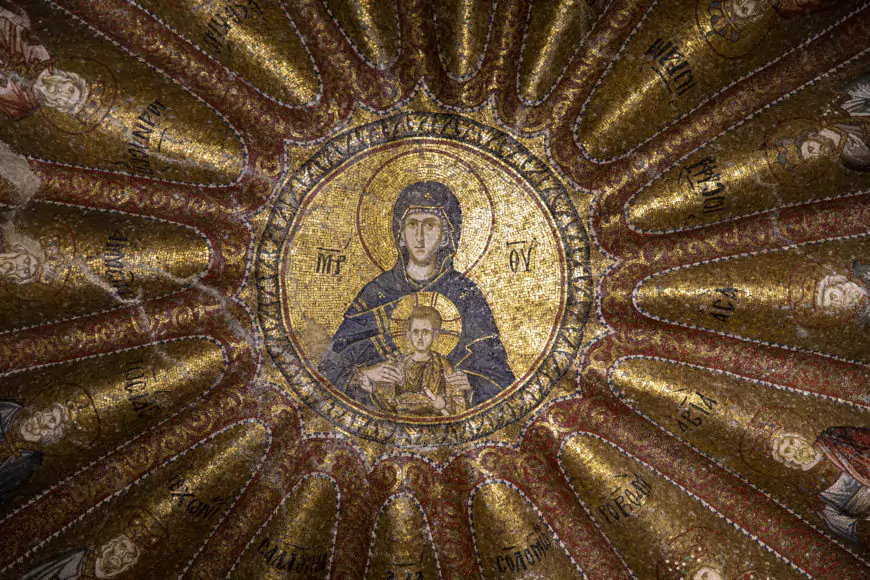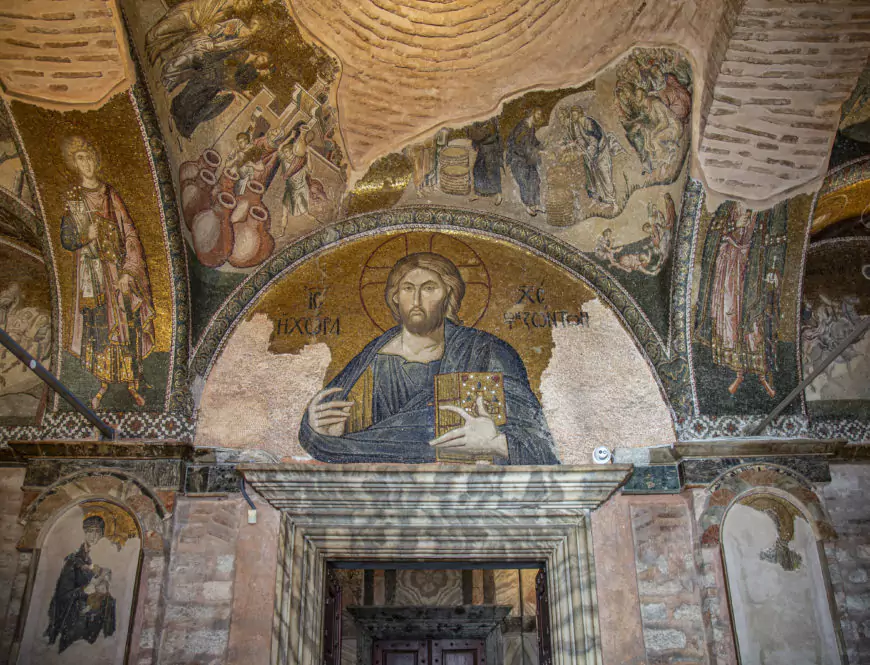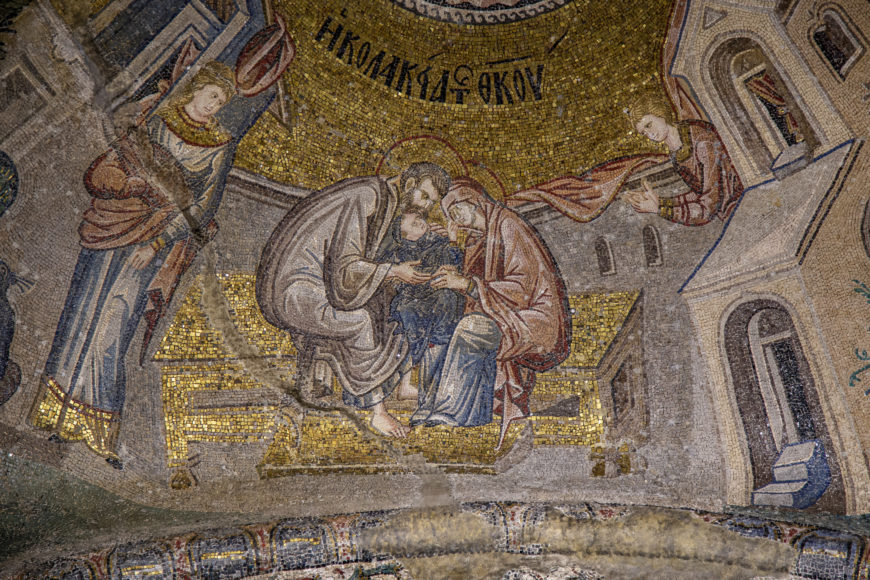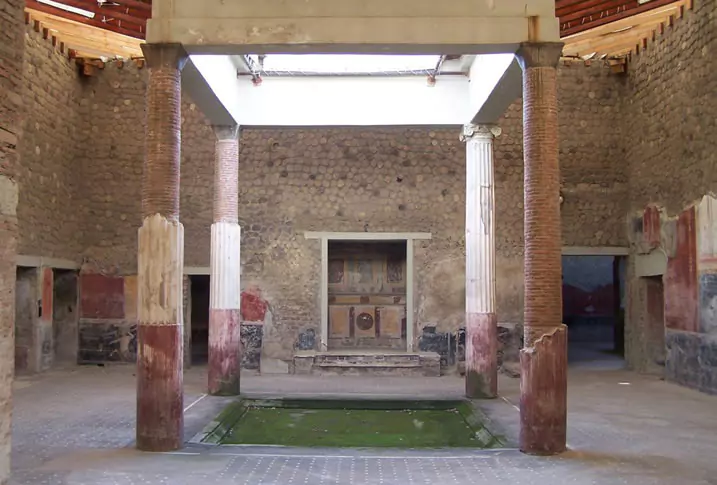Looking for a muse? Check no further. Discover the Best of Art, Culture, History & Beyond!

The Chora Church, known today as the Kariye Museum, stands as a testament to the artistic and theological brilliance of the Late Byzantine period. Nestled in Istanbul, this former church is adorned with mosaics and frescoes that not only showcase exceptional craftsmanship but also convey profound narratives of Christian salvation. These artworks provide a window into the spiritual aspirations and doctrinal emphases of the era, reflecting a deep-seated desire for divine grace and eternal life.
Originally established as a monastery complex outside the walls of Constantinople, the Chora Church underwent significant transformations, especially during the 11th and 14th centuries. The term “Chora” translates to “in the country,” highlighting its initial location beyond the city’s boundaries. However, as Constantinople expanded, the church found itself within the city’s embrace, evolving into a significant center of worship and art.
The architectural layout of the Chora Church is emblematic of Byzantine design, featuring a central dome, intricate narthexes (entrance halls), and a side chapel known as the parekklesion. This chapel, serving as a funerary space, is particularly noteworthy for its thematic focus on resurrection and eternal life, aligning with the overarching theme of salvation depicted throughout the church’s decorative program.
Mosaics of the Chora Church – Illuminating the Path to Salvation

The mosaics of the Chora Church are celebrated for their intricate detail, vibrant colors, and theological depth. They narrate pivotal events from the lives of the Virgin Mary and Jesus Christ, guiding worshippers through a visual journey of faith and redemption.
The Life of the Virgin Mary: The inner narthex houses a series of mosaics detailing the life of the Virgin Mary, from her birth to moments preceding the Annunciation. These scenes emphasize her purity and pivotal role in the incarnation, underscoring the belief in her as a vessel of salvation.
The Ministry and Miracles of Christ: Adjacent mosaics depict Christ’s miracles and teachings, reinforcing his divine authority and the manifestation of God’s presence on earth. Scenes such as the healing of the blind and the multiplication of loaves and fishes illustrate themes of compassion, provision, and spiritual enlightenment.
The Anastasis (Resurrection): In the apse of the parekklesion, the Anastasis mosaic stands as a focal point. It portrays Christ triumphantly descending into Hades, raising Adam and Eve from their tombs, symbolizing the liberation of humanity from the bonds of sin and death. This powerful image encapsulates the essence of salvation, offering hope of eternal life to the faithful.
Frescoes of the Chora Church – Complementing the Mosaic Narrative

While the mosaics dominate much of the decorative scheme, the frescoes in the Chora Church, particularly within the parekklesion, complement and enhance the soteriological themes. These frescoes delve deeper into the concepts of judgment, intercession, and the afterlife.
The Last Judgment: One of the most striking frescoes depicts the Last Judgment, where Christ is enthroned as the ultimate judge, flanked by the Virgin Mary and John the Baptist. Below, the righteous are separated from the damned, reinforcing the moral imperatives of the Christian faith and the consequences of one’s earthly actions on their eternal destiny.
Intercessory Figures: The frescoes also highlight saints and angels in intercessory roles, reflecting the Byzantine belief in the communion of saints and their ability to intercede on behalf of souls. This underscores the communal aspect of salvation, where the faithful are supported by a celestial community in their spiritual journey.
Theological Implications and Artistic Excellence

The decorative program of the Chora Church is not merely ornamental but serves as a didactic tool, educating and inspiring the faithful. The meticulous artistry reflects the Byzantine mastery of mosaic and fresco techniques, characterized by:
- Naturalism: Figures are rendered with a sense of movement and emotion, departing from the more static representations of earlier periods. This naturalism enhances the relatability of the sacred narratives.
- Use of Light: The strategic placement of gold tesserae in mosaics creates a shimmering effect, symbolizing divine light and presence, drawing worshippers into a transcendent experience.
- Spatial Composition: The integration of architectural elements within the artwork creates an illusion of depth, inviting viewers to contemplate the mysteries of faith within a seemingly expanded sacred space.
The Chora Church stands as a monumental embodiment of Byzantine theological and artistic endeavors to depict salvation. Through its resplendent mosaics and evocative frescoes, it offers a visual theology that has inspired and educated generations. Today, as a museum, it continues to captivate visitors, bearing witness to a rich legacy where art and faith converge in the pursuit of understanding divine grace and eternal life.
For a more in-depth exploration, consider watching this detailed overview of the Chora Church’s mosaics and frescoes:

This article is published on ArtAddict Galleria, where we explore the intersections of art, history, and culture. Stay tuned for more insights and discoveries!


